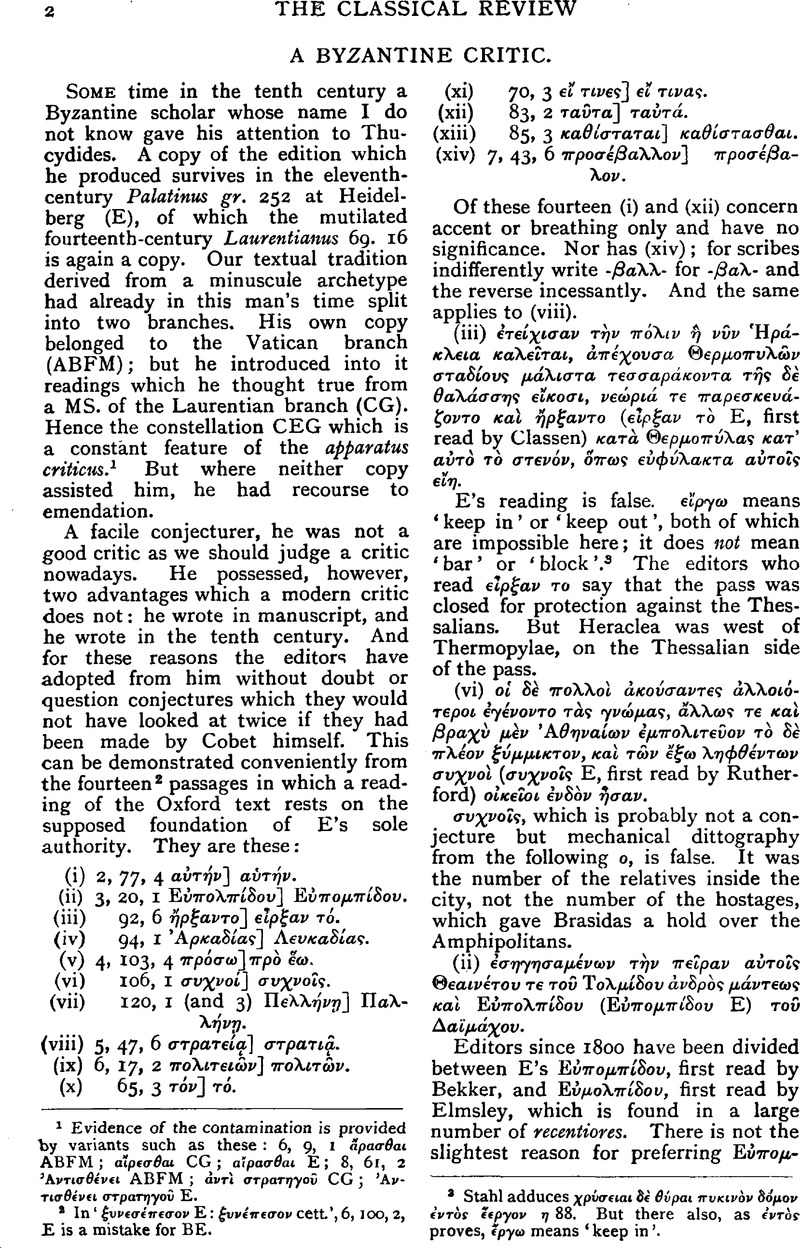No CrossRef data available.
Published online by Cambridge University Press: 27 October 2009

page 2 note 1 Evidence of the contamination is provided by variants such as these: 6, 9, 1 ἲρασθαι ABFM; αίρµσθαι CG; αίρασθαι E; 8, 61, 2 ंॗलγθέॗµι ABFM; άॗलί σραल॑γού CG; ंॗलγθέॗµι σραल॑γού E.
page 2 note 2 In ξυνεσ⋯πεσον E :ξυν⋯πεσονcett’, 6, 100, 2, E is a mistake for BE.Google Scholar
page 2 note 3 Stahl adduces χρὐσειαι δ⋯ θ⋯ρσι πυκιν⋯ν δ⋯μον ⋯ντ⋯ς ἔεργον η 88, But there also, as ⋯ντ⋯ς proves ἔργω means ‘keep in’.Google Scholar
page 3 note 1 Aldus must have had access to E or a copy of it. See below on 4, 15, 1. This is not surprising ; for E came to the Palatine library in 1567 from Ulrich Fugger, who had acquired it from the library of the Venetian Giovanni Battista Egnazio († 1553), a close friend and collaborator of Aldus. See Christ, K., Z.f.B. 1919, 3–34Google Scholar, and generally Biedl, A., Byz. Zeit. 1937, 18–41.Google Scholar
page 3 note 2 See the arts. Ellomenon and Klymenon in P.W.